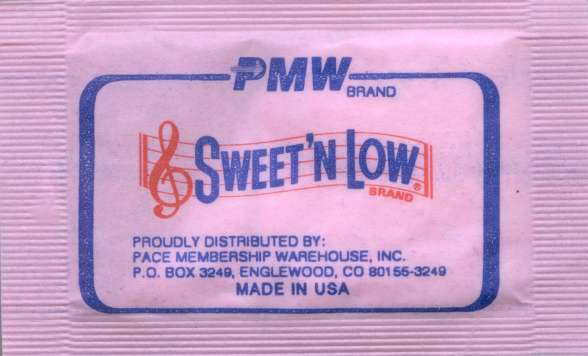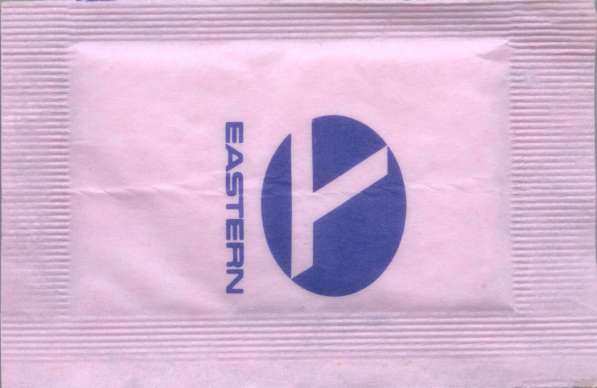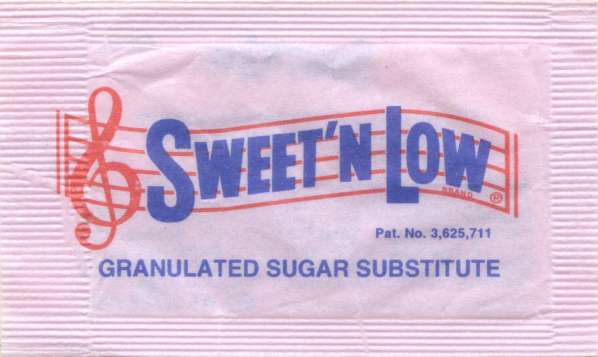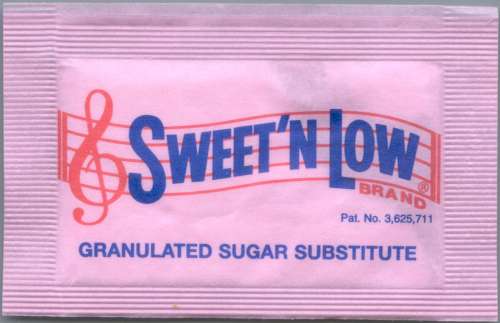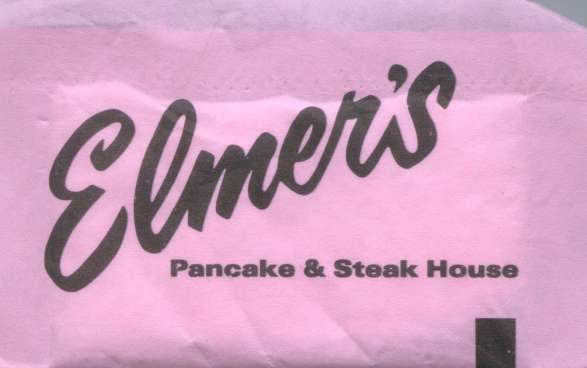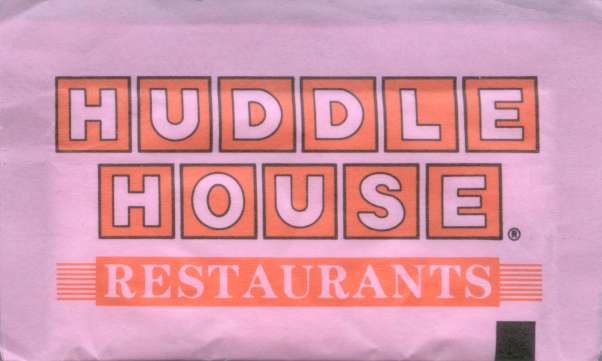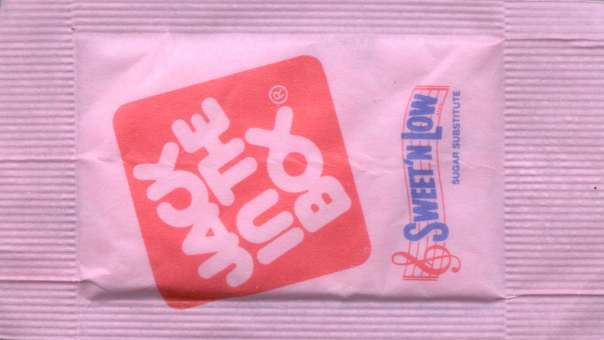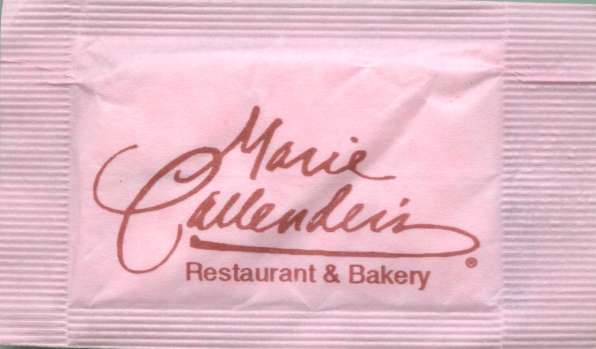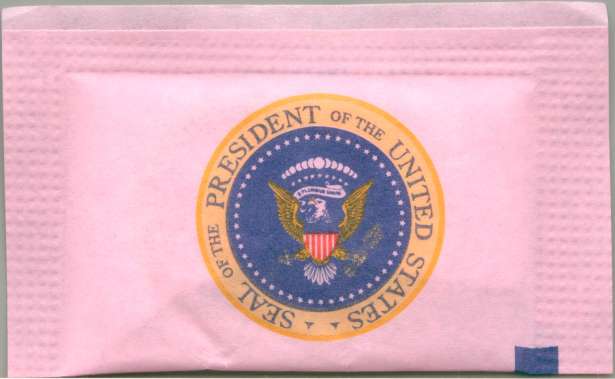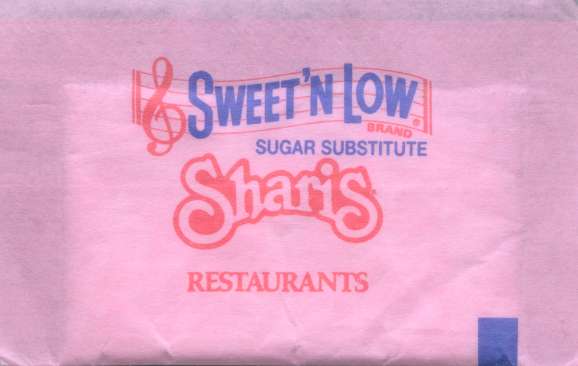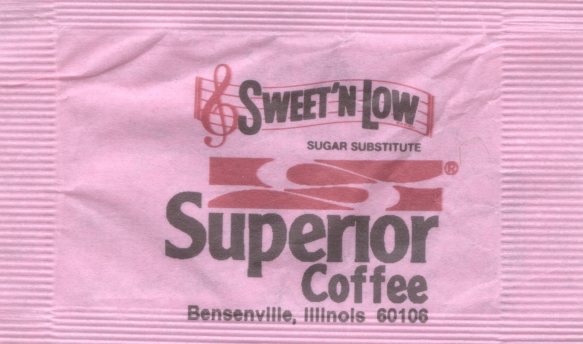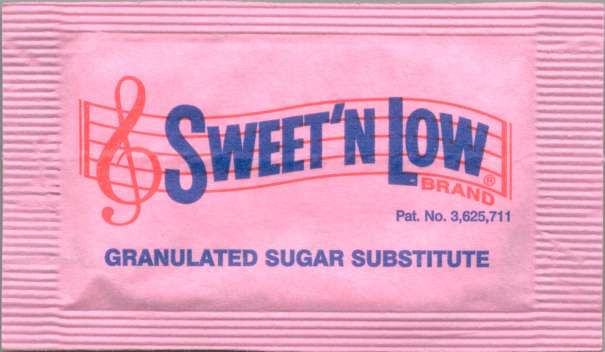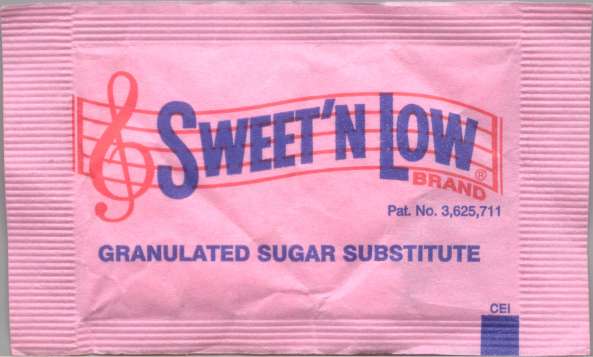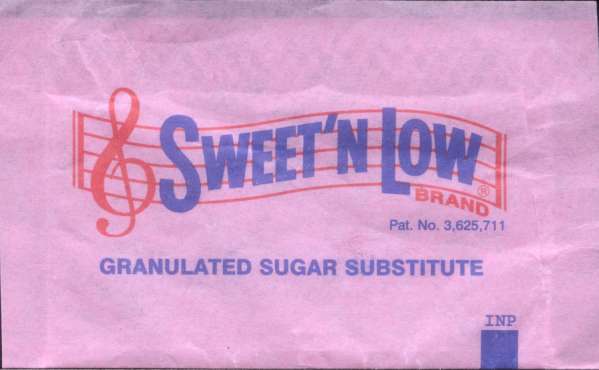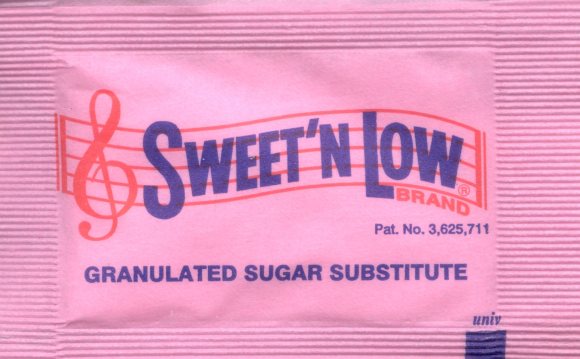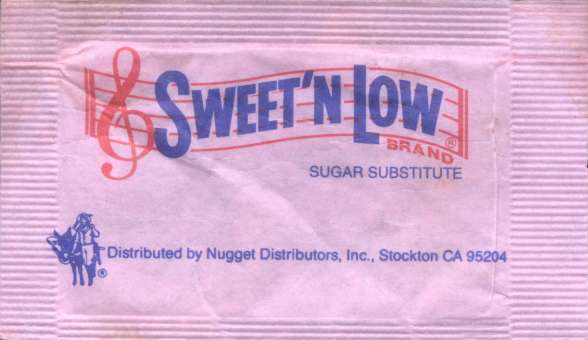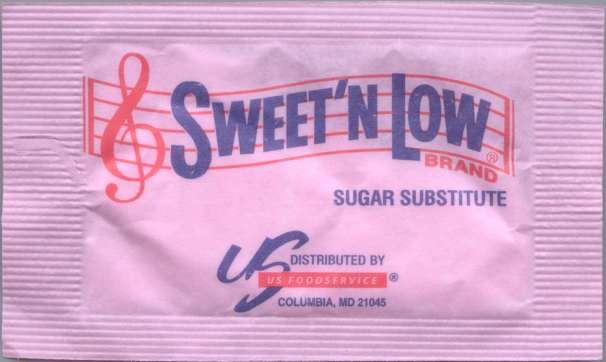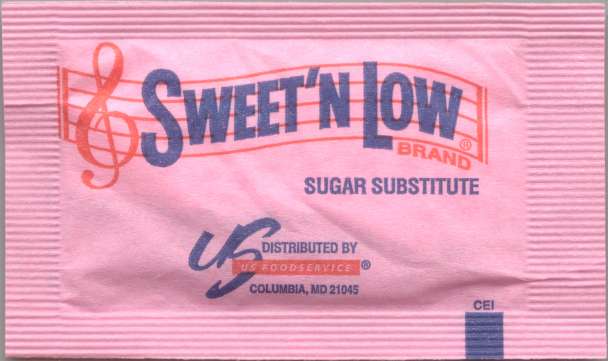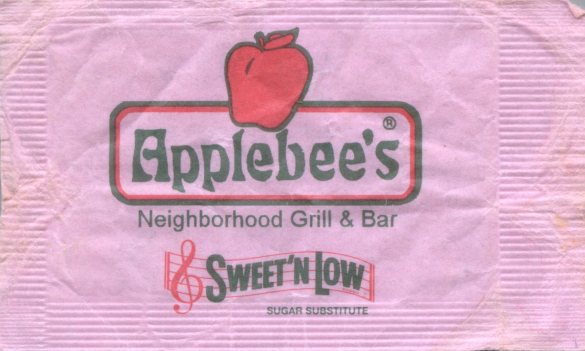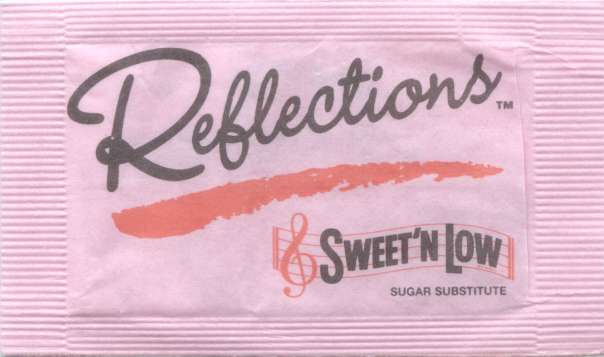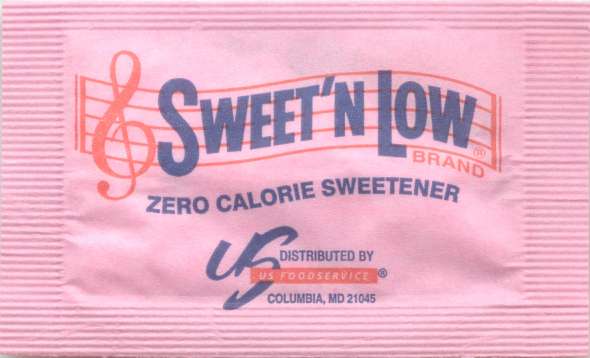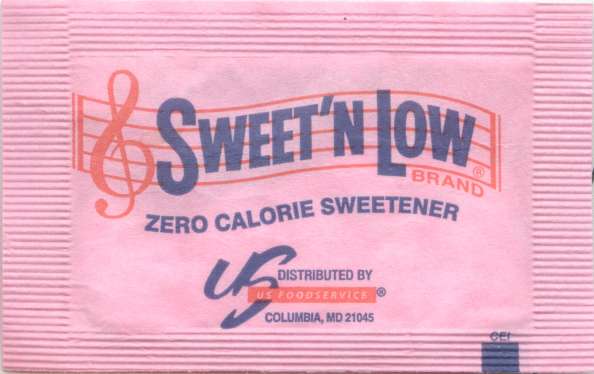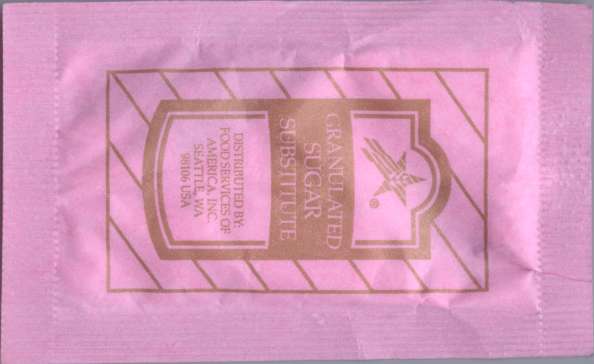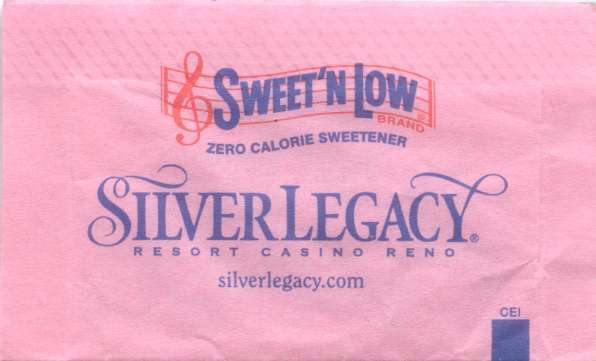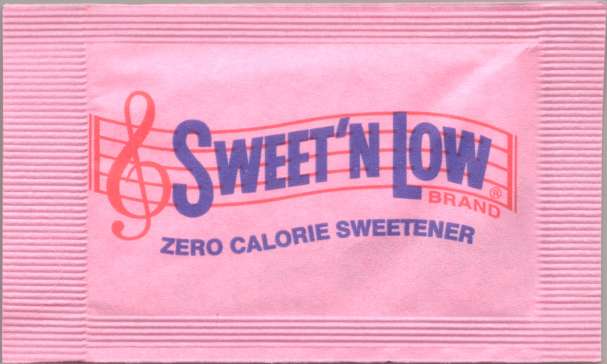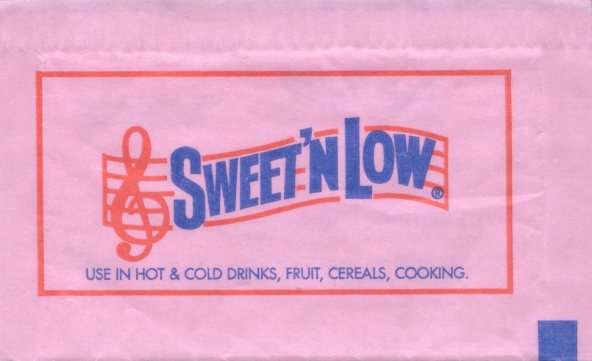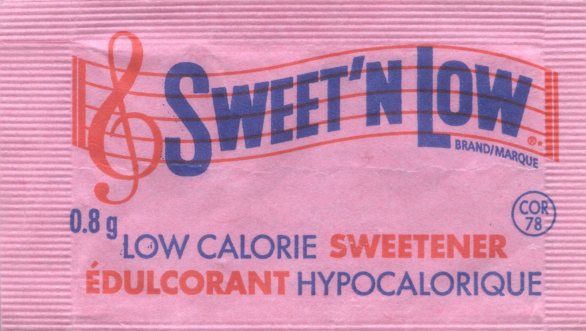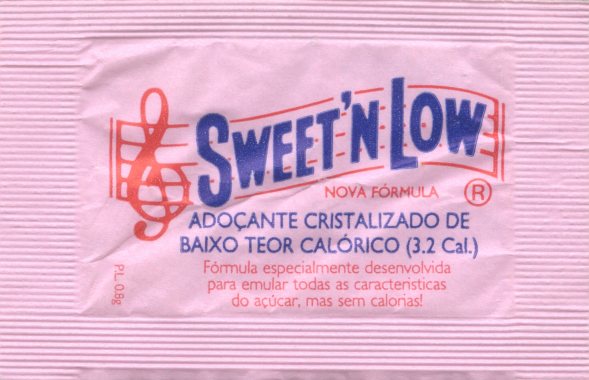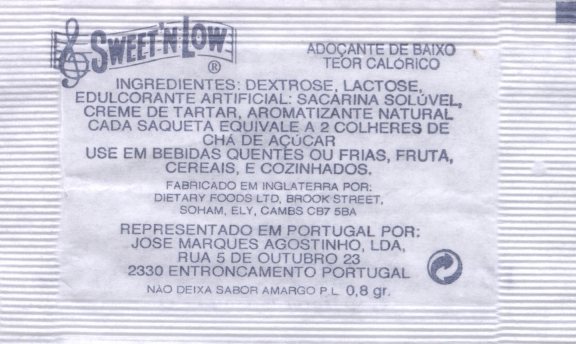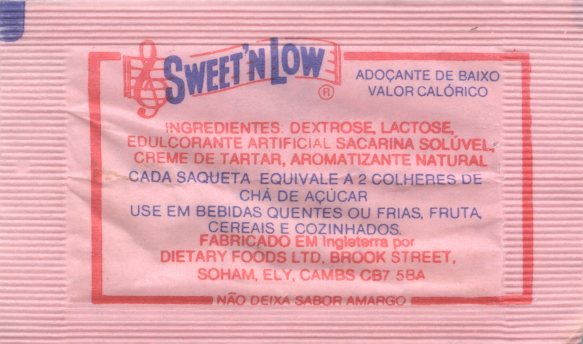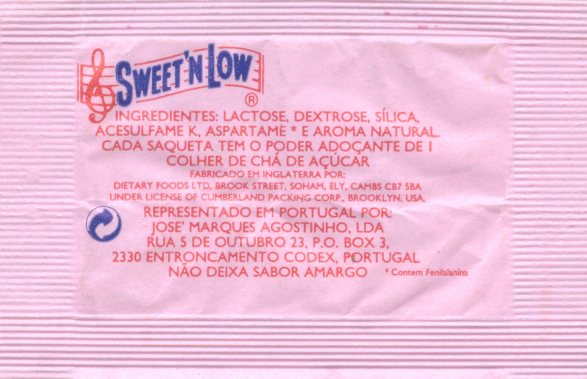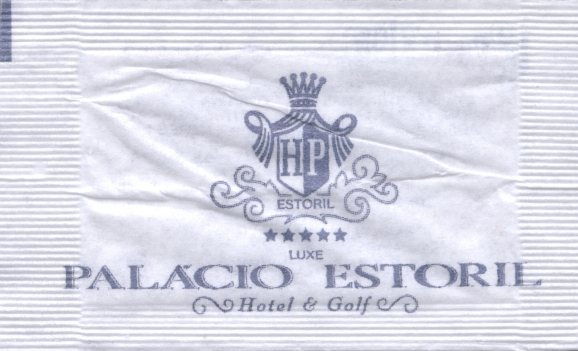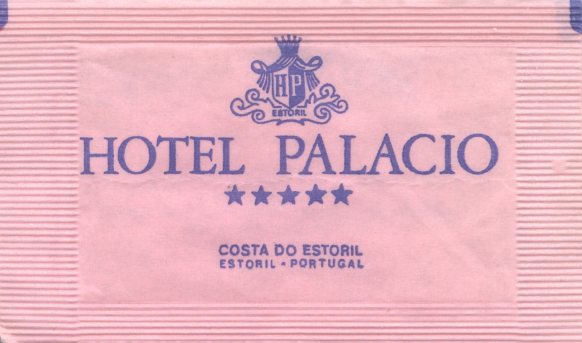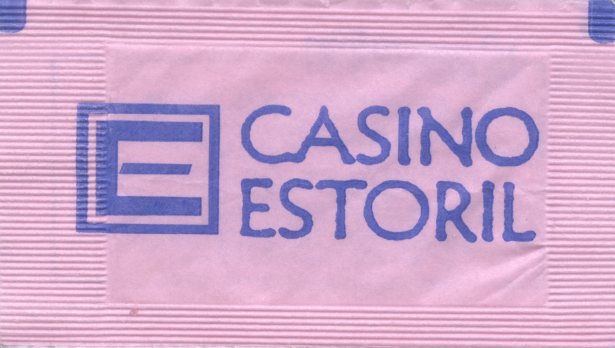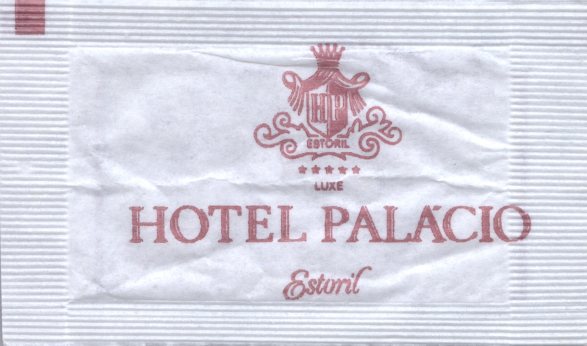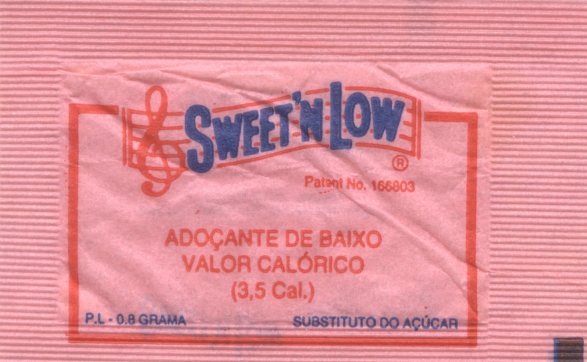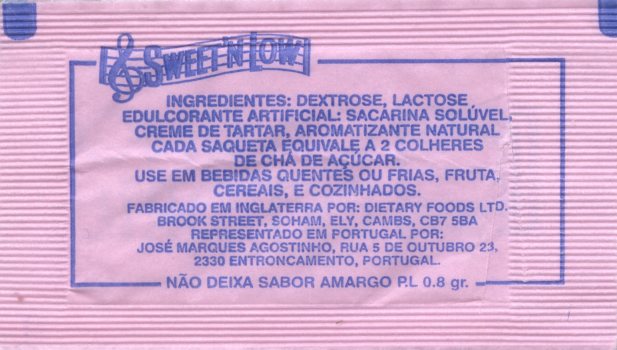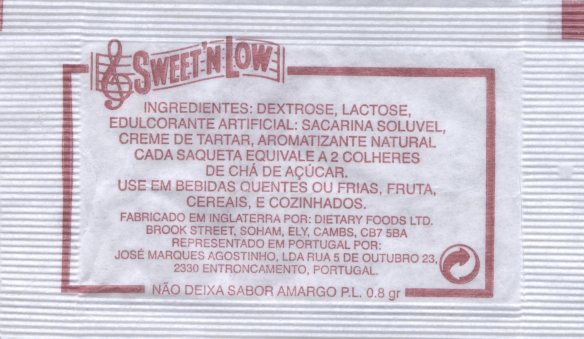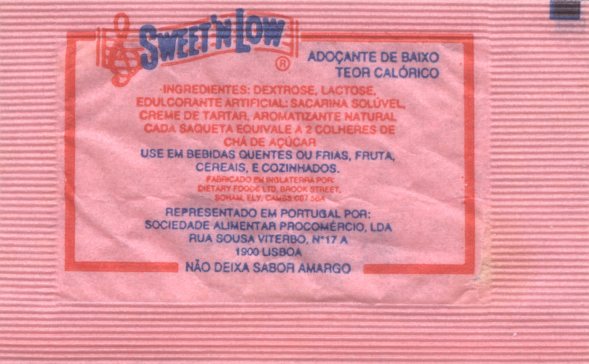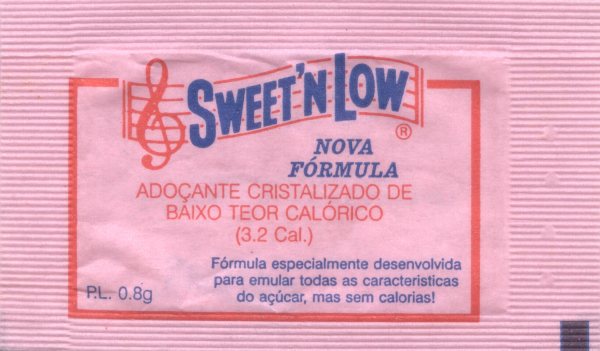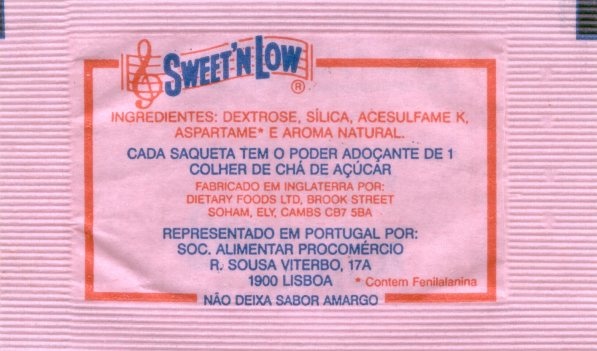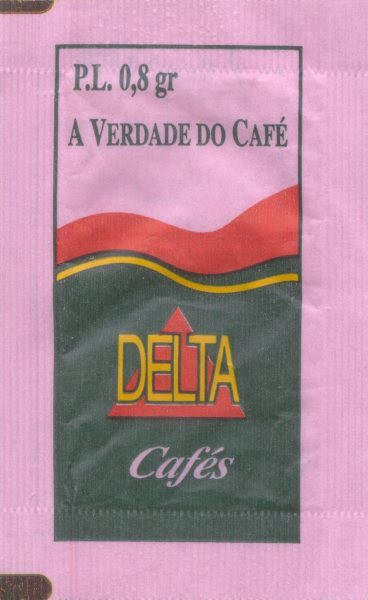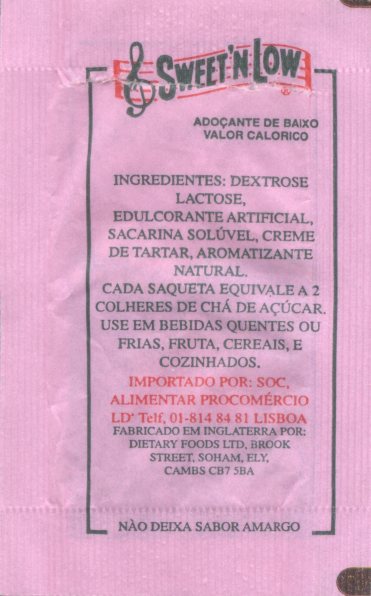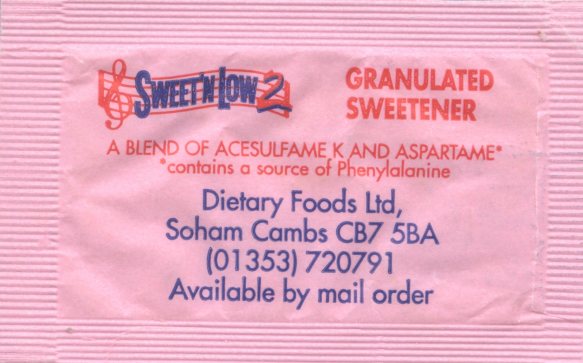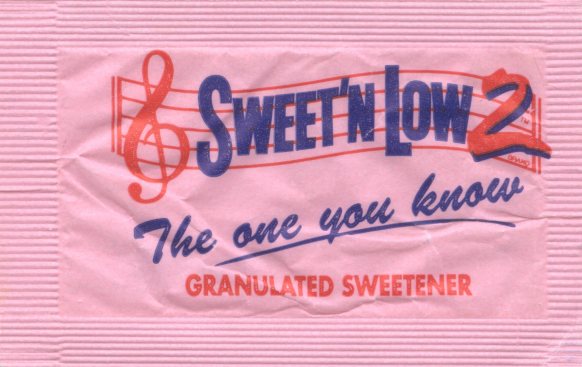|
A Closer Look At Those Ubiquitous Pink Packets |
Cumberland Packaging
Corporation first began packing a saccharine based
sweetener into pink little packets back in 1957, and although the logo and
graphics, and even the formula have all changed over the years; Cumberland still
packs their sweetener into pink little packets today, just as they did 50 years
ago.
Thus, although the
original formula has long been discontinued, the little pink packet has become a
familiar icon, both domestically, and abroad.
Sweet'n Low is
currently marketed in many countries around the world. But don't just grab that familiar
packet when abroad. Read the ingredient
statement carefully. Sometimes it is printed in English as well as the native
language, and if it is not, most times it is fairly easy to discern the
ingredients.
"Why in the world
would I read the ingredient statement" is a valid question. And the answer is
simple: the packet may be pink, and the logo very familiar, but what's inside
might not be the same as what you are used to :) . It might even contain
ingredients which you consider banned from use in food products :) . ...And that
wouldn't be saccharine.
Why Sweet'm Low has
not stuck to their proven formula internationally might not be so difficult to
understand, once one realizes that labeling laws are different in each country,
and allowed and prohibited food ingredients vary from place to place as well.
But that's my theory. There was surely more to their choices of ingredients than
that.
Bottom line is, the Sweet'n Low packet
in the US does not contain what the packet in Canada or elsewhere contains.
Here is a table of the known (to me)
ingredient statements found on Sweet'n Low packets throughout the years, and the
world. I added the calories, and use of the Kosher Symbol, as both are
interesting aspects as well.
|
Year: |
Country: |
Ingredient Statement: |
Calories / Serv: |
Kosher Symbol: |
|
|
Australia |
Lactose (from milk), Sweetener (Saccharin),
Flavoring. |
|
None |
|
|
Canada |
Dextrose, Sodium Cyclamate (34%), Silicon Dioxide. |
2 |
None |
| |
Portugal |
|
|
|
|
|
United Kingdom |
A blend of Acesulfame K, and Aspartame. |
|
None |
|
1969 |
United States |
Lactose, 4% soluble saccharine, cream of tartar, a blend of nutritive and artificial sweeteners. |
3.5 |
None |
|
1990 |
United States |
Nutritive Dextrose, 4 % Calcium Saccharin, Cream of
Tartar, Calcium Silicate |
4 |
OU-Parve |
|
1994 |
United States |
Nutritive Dextrose, 3.6 % Calcium Saccharin, Cream
of Tartar, Calcium Silicate |
0 |
OU-Parve |
Look below, these are
all the pink packets I have collected so far.
United States
Sweet'n Low has chosen
for some time now to include an ingredient statement and nutrition facts
on the back of their tiny pink packets, in the U.S., and as you will see
below, in other countries abroad as well. In the U.S., this started before NLEA went into
effect, and although NLEA does not require such declaration on single
serving packages, which come in a properly labeled box, Sweet'n Low has
continued including this info. This has led over the years, to an
interesting array of designs, as if you don't declare info it is ok; but
if you do, you must comply with the ever changing
regulations.
|
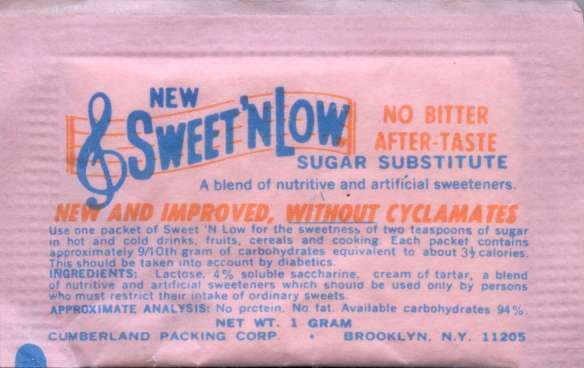 I
am assuming that this packet design is from 1969. Cyclamates were banned from
use in food products in the US in 1970. I
am assuming that this packet design is from 1969. Cyclamates were banned from
use in food products in the US in 1970.
Funny, but they are
still allowed in Canada, and are used in the Canadian version of Sweet'n
Low.
Notice the warning,
even before the 1977 FDA mandate. And still the little packet has become
an icon :) .
The ingredient
statement on this one reads: Lactose, 4% soluble saccharine, cream of
tartar, a blend of nutritive and artificial sweeteners which should be
used only by persons who must restrict their intake of ordinary sweets. |
|
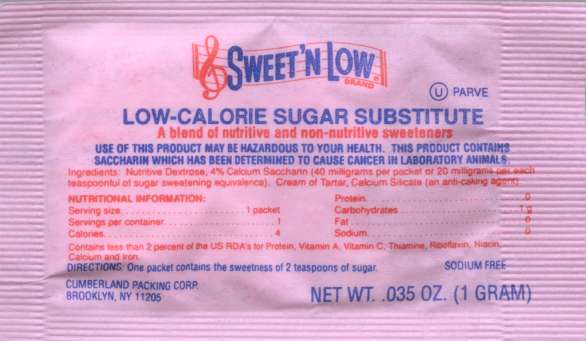 PMW stands for Pace Membership Warehouse. It's short existence
lasted from 1984 to the early 90's. PMW stands for Pace Membership Warehouse. It's short existence
lasted from 1984 to the early 90's.
I believe that this
packet is from the mid 80's, or shortly thereafter. Just from the way the
verbiage on the back reads.
|
|
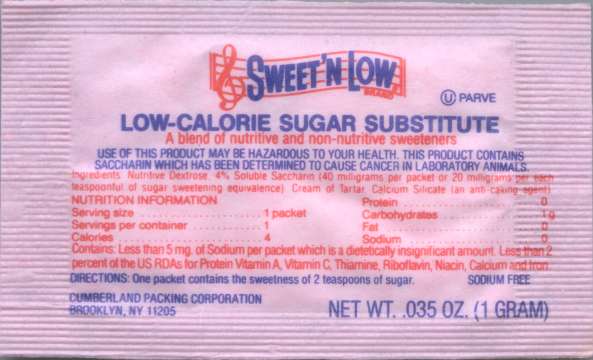 Eastern Airlines went belly up in 1991. Hence this reverse
design is from a time before NLEA took effect :) . Hence also the 4
calories :) , and "Low-Calorie Sugar Substitute." Eastern Airlines went belly up in 1991. Hence this reverse
design is from a time before NLEA took effect :) . Hence also the 4
calories :) , and "Low-Calorie Sugar Substitute."
With the advent of
NLEA, 5 calories or less is considered insignificant, and can therefore be
declared as 0 (as on packets further below).
Interestingly, 1991
was also the year that the FDA repealed a proposed ban on saccharin :) ,
but continued requiring a warning label, which had been enforced since
1977. Hence the "hazardous to your health" on this Eastern airlines packet
:) .
Notice also, a SODIUM
claim :) , and the Circle U Parve. The latter is a Jewish designation,
which certifies this product as Kosher. Circle U stands for the Orthodox
Union, and some might say that the symbols presence means that the rabbi
got paid quite well :D .
Now... Since this
product is Kosher, is it also Halal??? |
|
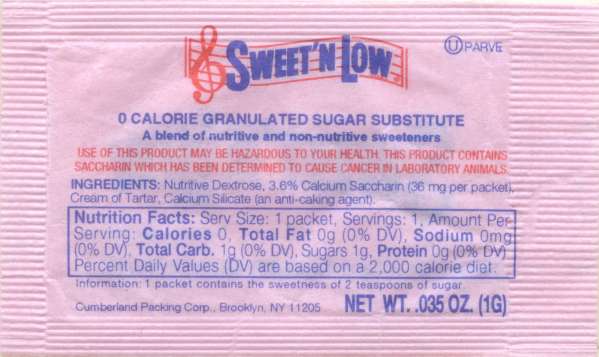 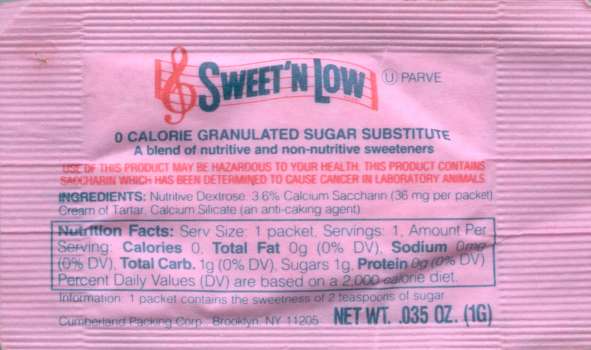 This packet design still
says "hazardous to your health", but this design is post NLEA. So... after
1994, but prior to 2001. Notice, no website address. When did they start
putting that on their packets anyway? They sure still do have a crappy
unprofessional looking website. This packet design still
says "hazardous to your health", but this design is post NLEA. So... after
1994, but prior to 2001. Notice, no website address. When did they start
putting that on their packets anyway? They sure still do have a crappy
unprofessional looking website.
Notice, CALORIES now
appear as 0. Per Sweet 'n Low's website: Each serving contains less than 4
calories which the FDA considers dietetically zero. In other words, less
than 5 calories per serving is considered insignificant, and therefore can
be declared as 0.
Notice also, the SODIUM FREE claim is gone :) . With the
advent of NLEA, you cannot make a claim against X, if X is normally not
present in such food. |
|
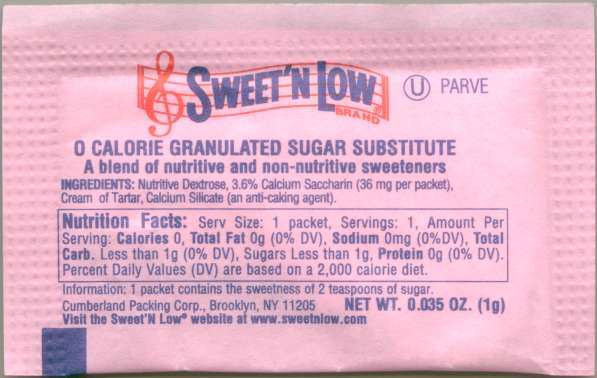 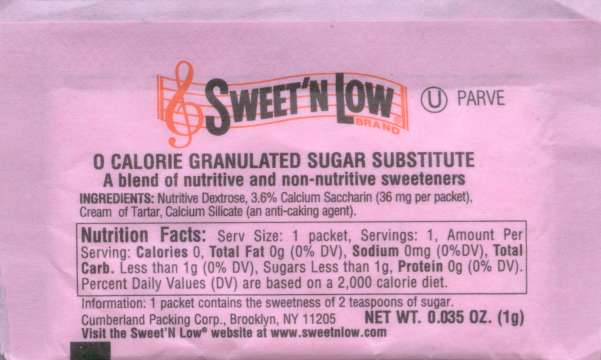 This design is post 2000, as it has no saccharin
warning: On December 21
(2000), the President signed legislation to remove the warning label that
had been required on saccharin-sweetened foods and beverages since 1977
("SWEETEST" Act (H.R.
5668)). This design is post 2000, as it has no saccharin
warning: On December 21
(2000), the President signed legislation to remove the warning label that
had been required on saccharin-sweetened foods and beverages since 1977
("SWEETEST" Act (H.R.
5668)).
Look close at this
reverse design, and the one below it. Quite a few differences. So should
it be "website" or "web site"? |
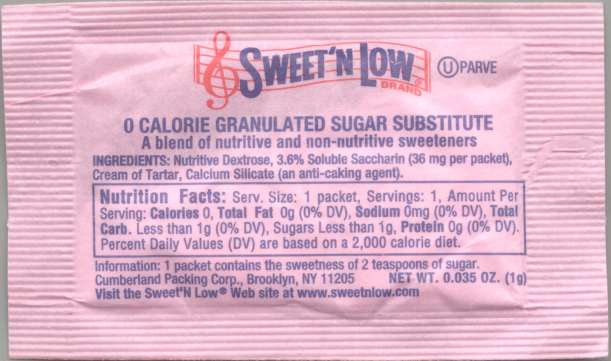 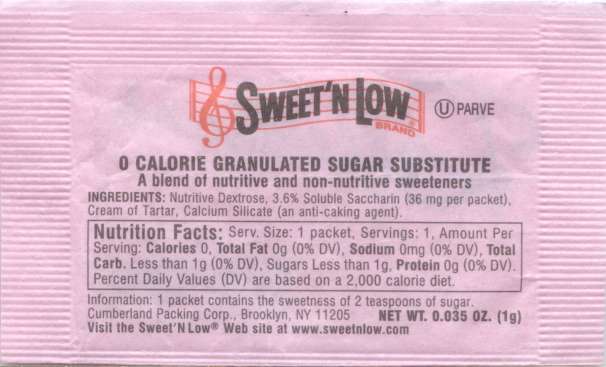 This is the last reverse design before Trans Fat
declaration became law on FDA labels. This is the last reverse design before Trans Fat
declaration became law on FDA labels. |
Have you recently
looked at that pink sweetener packet on the restaurant table? Probably not. But
if you had, you no doubt noticed the modified logo. Had you read the back, you
would have noticed that trans fat has been added to the nutrition facts.
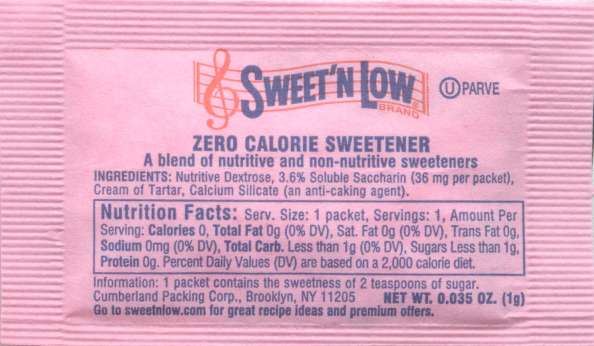 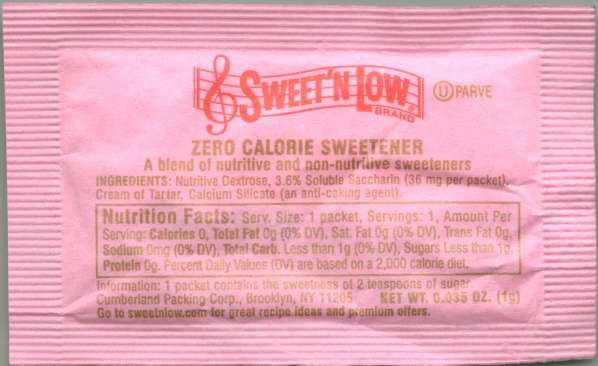 Notice -> Trans Fat 0g.
This was not on the
pink packets before, but due to the change in labeling law, I guess they
took advantage of having it there :) .
How in the hell could
it have any trans fat? Total fat is 0g! ...And therefore Trans Fat need
not be declared. But I guess, in marketing to the masses, the majority of
whom don't know nada about it, there might be an advantage of listing
Trans Fat :) .
Notice also -> It
is now a Zero Calorie Sweetener :) . But the "Zero Calorie Sweetener"
change has not caught on completely just yet... The Foodservice of America
packet has the "Granulated Sugar Substitute" on the front, and the new
"Zero Calorie Sweetener" back :) . See below. |
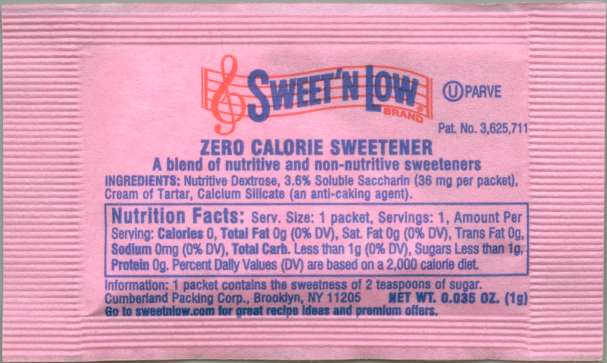 So "Zero
Calorie" it is! This is a correct claim, as the entire packet is a
serving, and has less than 5 calories :) . Were this not a single serving
packet, it would have to declare "0 calories per serving."
Notice, the only
difference on this back design, from the above, is the placement of the
patent number. |
To iterate my earlier
comment, today Sweet'n Low is found
all over the world. It is interesting though, it is not the same all over the
world. So don't just grab that pink packet. Read the ingredient statement first.
In many cases it is in English too, and in most cases where it is not, you can
discern the ingredients.
Here are the packets from
outside the US, that I have collected so far.
AUSTRALIA
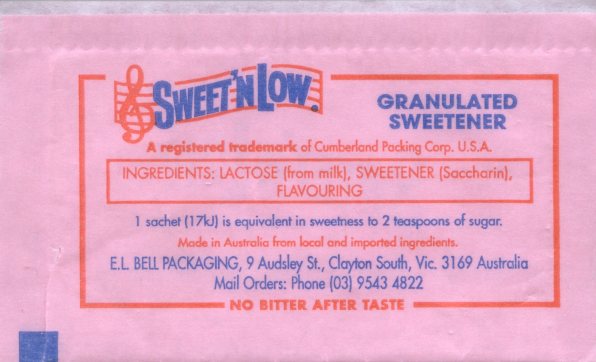
I like the front on this one. Still
claims "No Bitter After Taste" :) .
|
CANADA
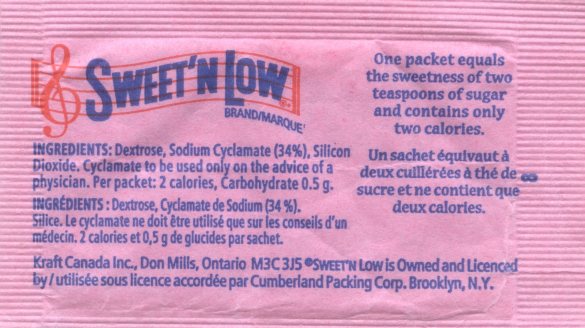
So "
|
Portugal
United Kingdom
If you are interested in a trade, please send an email:
sweetenerc@yahoo.com
Or... If you have packets you simply wish to donate :) ... Please send
to:
 I
am assuming that this packet design is from 1969. Cyclamates were banned from
use in food products in the US in 1970.
I
am assuming that this packet design is from 1969. Cyclamates were banned from
use in food products in the US in 1970. 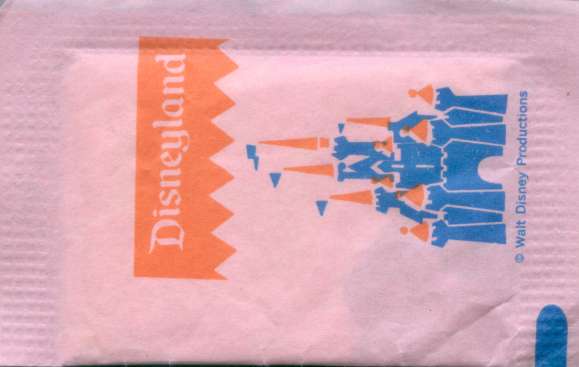
 PMW stands for Pace Membership Warehouse. It's short existence
lasted from 1984 to the early 90's.
PMW stands for Pace Membership Warehouse. It's short existence
lasted from 1984 to the early 90's.
